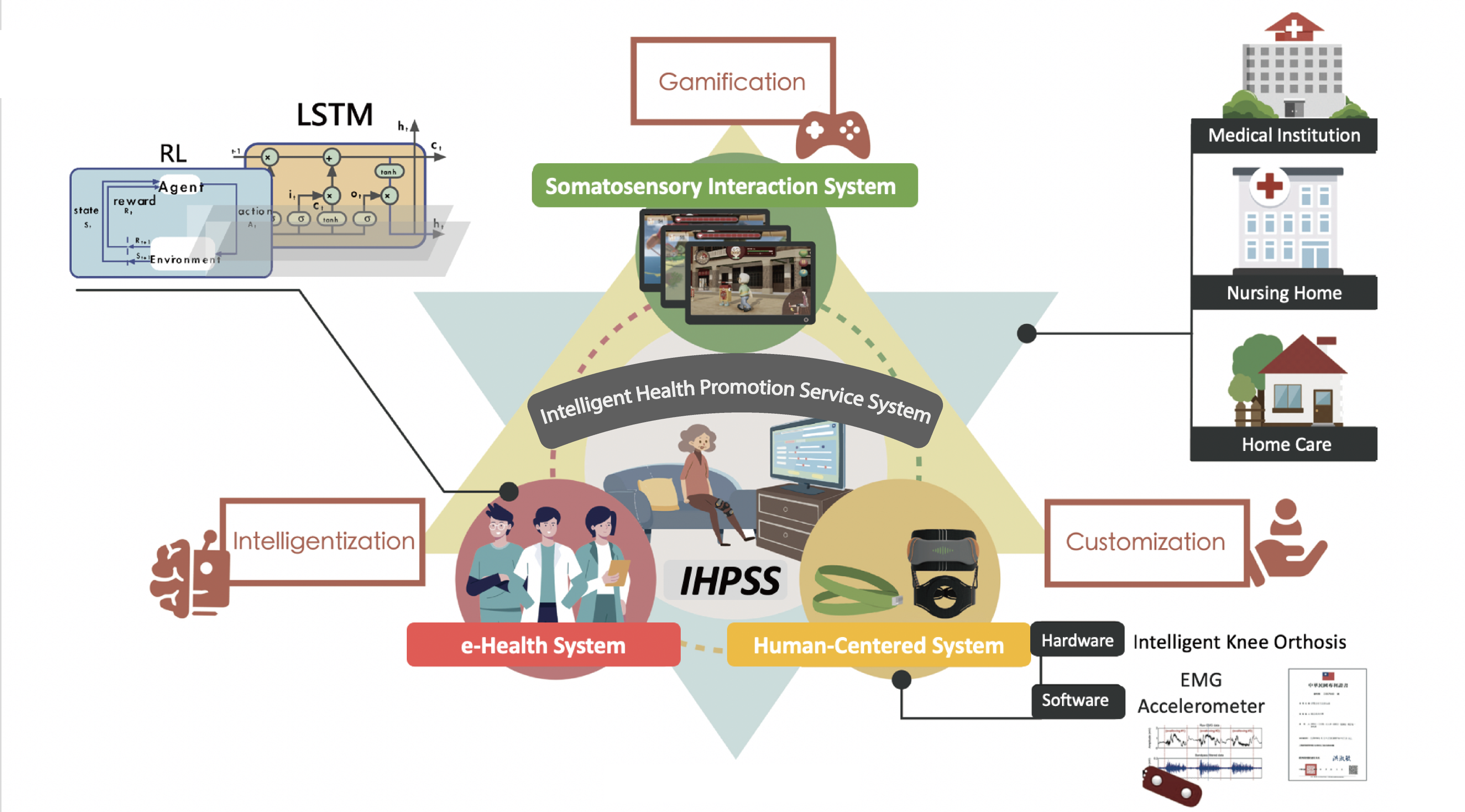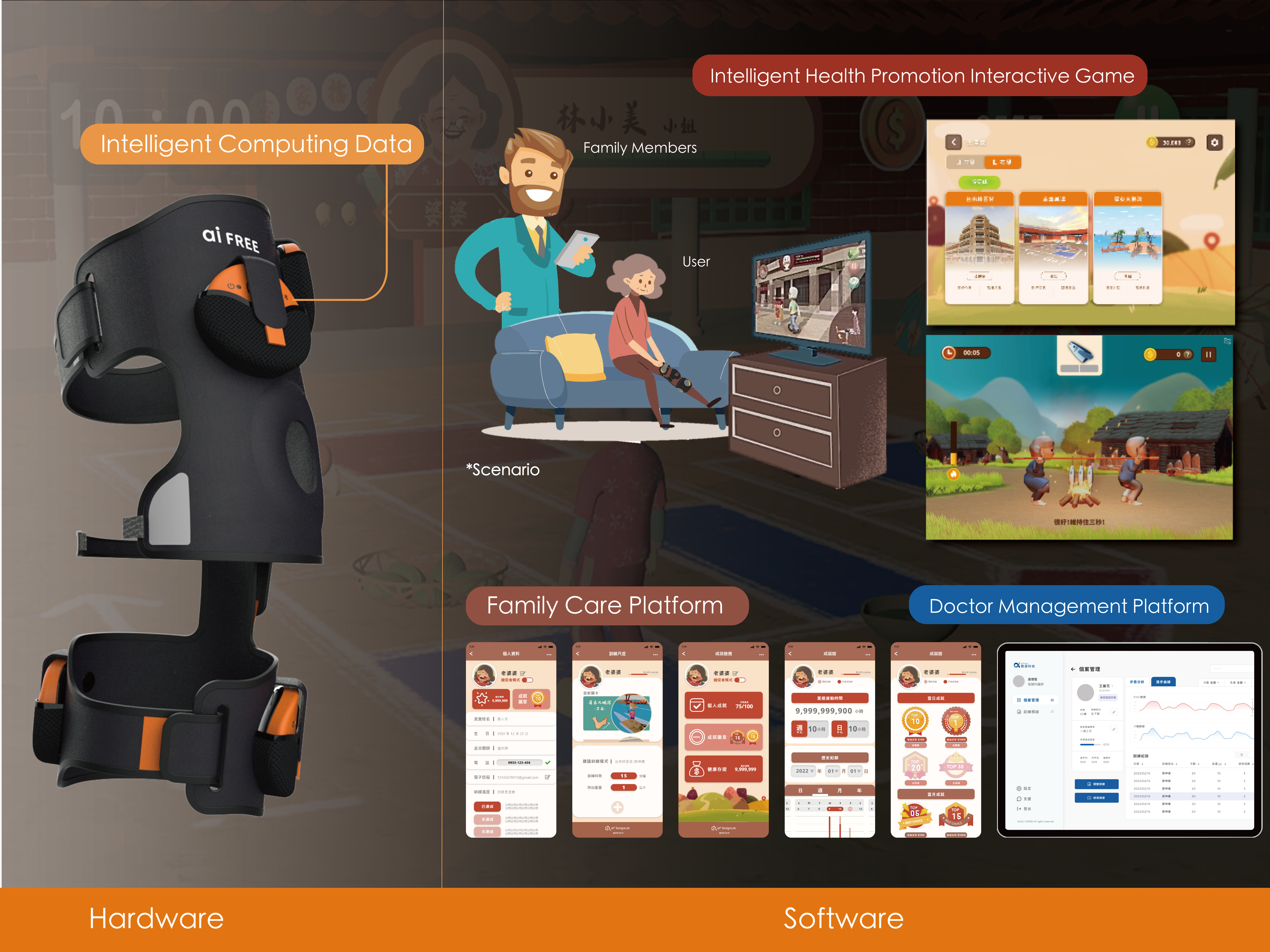Smart Health Promotion System
Wei-Chih Lien, Attending Physician, Dept. of Physical Medicine and Rehabilitation
With the increasingly aging global population, the elderly gradually develop debilitating symptoms as they grow older, leading to related chronic diseases. At the same time, the COVID-19 pandemic has resulted in the suspension of health promotion activities of the elderly and lead to changes in their previous lifestyle habits. Therefore, the “Smart Health Promotion Service System” planned by our team was based on the prevalence of chronic disease and frailty in an aged society and combined with the long-term care 2.0 policy promoted by the government to provide diverse services ranging from home, societal, and residential care services to improve the quality of life of patients requiring long-term care and caregivers. This can effectively solve and assist professionals in alleviating care pressure, decrease difficulty in health promotion follow-up, and immediately result in improvements. The smart healthcare provided by this system overcomes the traditional healthcare model, expands healthcare coverage to future developmental trends, and assist in the recording and transmission of medical information.
Our system provides a new smart rehabilitation tool and model “Smart Health Promotion Service System”. The system uses a detector of low-noise surface electromyography signals to detect the activity status of various muscle groups during training and information system integration was used to miniaturize the product. This was combined with historical and historical products that resonate with elderly people to design a retro rehabilitation game. The objective of this game is to provide a valuable aid for professionals to help them in accurately providing a suitable rehabilitation regimen for patients undergoing rehabilitation. The game can also help elderly people achieve “gamified, customized, and smartized” goals through precise rehabilitation regimens.

For the general public, the overcrowded scene in medical institutions, the long lines, the boredom of the elderly in waiting, and the rehabilitation equipment for traditional repetitive movement training reduce the motivation of the elderly to continue rehabilitation. The “Smart Health Promotion Service System” uses retro games to resonate with elderly people, increase rehabilitation motivation, and detect the status of various muscle groups during training. A wearable device is used for precise gait cycle segmentation in gait analysis and evaluation of frailty in elderly people. This system allows the public to undergo rehabilitation at home and their family members could understand their daily rehabilitation status using this system to improve emotional interaction and support. This reduces health insurance resource consumption and improves the quality of life of the user.

This system can effectively assist National Cheng Kung University Hospital service staff in providing rehabilitation plans. This system can effectively solve the problem of unequal physician-patient ratio as a valuable tool for long-term care services staff during operations. Furthermore, this system uses deep learning and data analysis to assist professional staff in providing the most accurate rehabilitation regimen for rehabilitation patients. Physicians can use professional reports to continuously interact with the patient and his/her family members and achieve aging in place, healthy aging, and active aging. In addition, the system's innovative community long-term care service model will be updated in the future to provide diverse rehabilitation functions and effectively improve medical care needs and the quality of life of rehabilitation patients.
This system was based on strengthening existing hardware support, understanding social needs and smart development trends for software-hardware integration. The system was developed and used in sub-health populations and disabled populations requiring muscle strength training. This system is worthy of Taiwan’s assistive technology basic research and human factors interaction design. In clinical development, it can improve Taiwan’s assistive device technology, promote the smart development for elderly people or people requiring rehabilitation in Taiwan, accelerate the research and development of assistive devices and human factor interactions for elderly people, and improve the healthcare level of elderly people. The system can decrease health insurance burden, saves medical costs in elderly people, and decrease the living and financial burden of family members, thereby improving national productivity and create social value.
